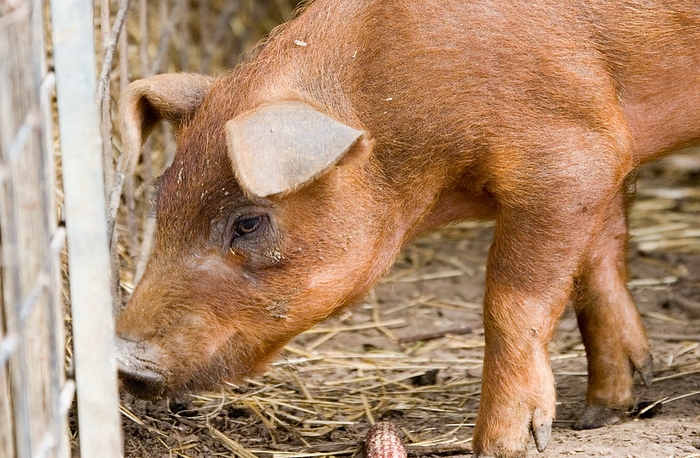By: Jiayan Liu
Image courtesy of Wally Hartshorn via Flickr Creative Commons
The Spread of African Swine Fever in Asia
The outbreak of African Swine Fever (ASF) is ongoing in Asia, especially in Cambodia, China, North Korea, Laos, Philippine, Mongolia and Vietnam [1]. The outbreak was first reported in northeastern China in August 2018, and then it has jumped the border to neighboring countries. The latest data provided by the Food and Agriculture Organization (FAO) indicates that almost 5 million pigs in Asia have died or been culled because of infection [2]. The current losses represent more than 10% of the total pig population in each outbreak occurring country. Other countries including Japan, the U.S., and countries in Europe are also ramping up preparation to prevent the virus enter and disease spread.
What is African Swine Fever?
ASF is a highly contagious hemorrhagic viral disease with high mortality rates in domestic and wild pigs [3]. It is caused by a virus within the Asfarviridae family. The virus can be transmitted by infected ticks and contaminated pork products, but it does not spread and cause disease among humans. Acute forms of ASF are characterized by high fever, depression, loss of appetite, hemorrhages in skin, vomiting and finally death. In milder infections, infected pigs may lose weight and develop signs of pneumonia, skin ulcers and swollen joints. ASF may be suspected based on clinical signs, but confirmation needs to be made with laboratory test [3]. Unfortunately, there is no vaccine for prevention and treatment. Culling and limiting transportation of infected pork and pork product are options for preventing transmission. Outbreaks of ASF have been reported in Africa, Europe and Asia in the past decades.
How does African Swine Fever Affect the Economy?
ASF has had a significant impact on the pig industry and economy in Asian countries. Food price data from China showed that pork prices rose 47% from the start of the outbreak to August 2019. The pork price in Vietnam has also increased by approximately 20% [4]. Changes in pig meat prices and domestic production can affect the global economy because pig meat is a major consumed meat in Asia and affect pork-exporting countries like Canada and the U.S. The outbreak is particularly affecting vulnerable small-scale farmers who may lack the expertise or funds to protect their animals from the disease [1]. Additionally, the decline in pig populations would reduce demand for soybeans, which is used as feed for hogs, and drastically decrease the import of soybeans.
Official Measures
FAO has deployed several response teams to assist countries in curbing the disease [1]. The teams worked with veterinary services and government representatives to increase biosecurity measures in swine farms, and advise on effective culling techniques that respect international animal welfare standards. To prevent further spread of disease, controlling pig and pig produce movement are important. For example, China and South Korea have set a buffer zone which separates the affected zone from the disease-free zone and controls the traffic of feed vehicles between zones [2]. Governments also have provided funding to swine farm to support pork production and security and controlled the increasing pork prices.
References
[2] http://www.fao.org/ag/againfo/programmes/en/empres/ASF/situation_update.html
[3]https://www.oie.int/en/animal-health-in-the-world/animal-diseases/african-swine-fever/


